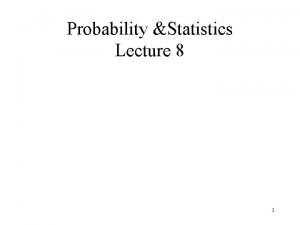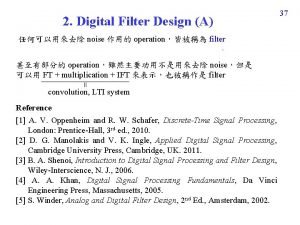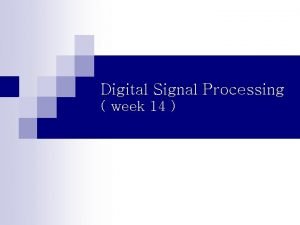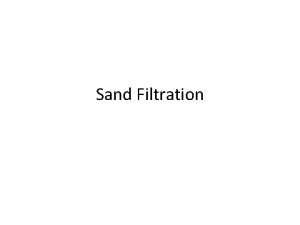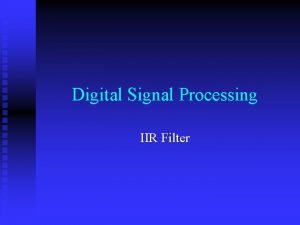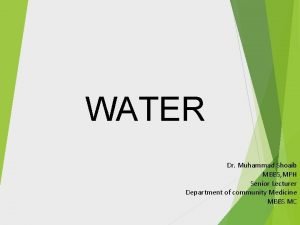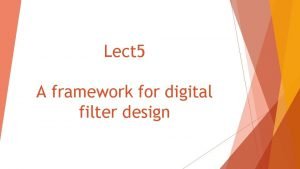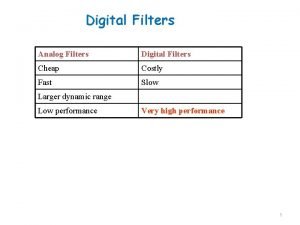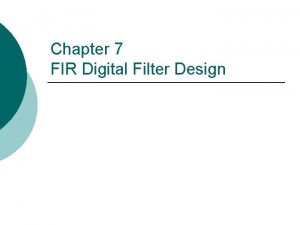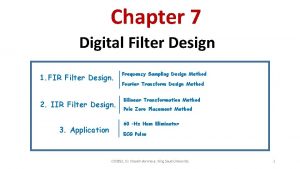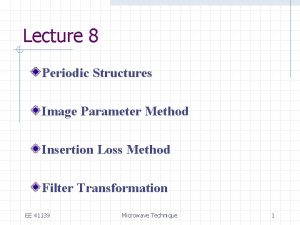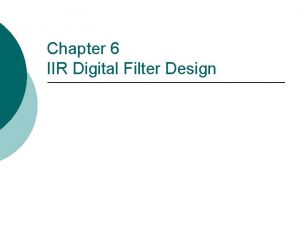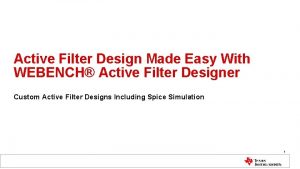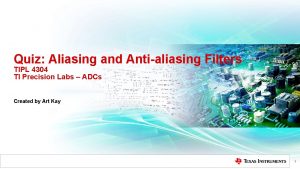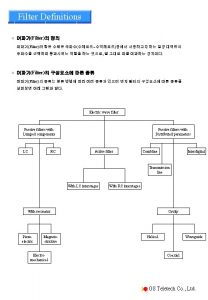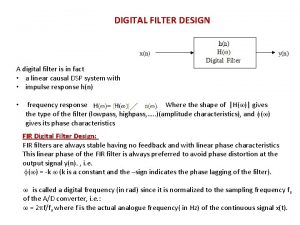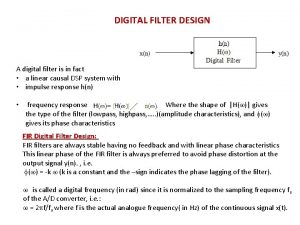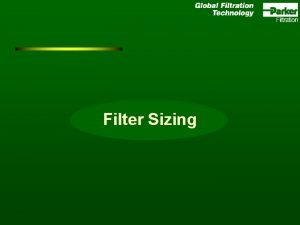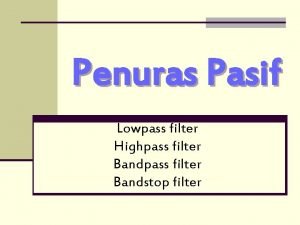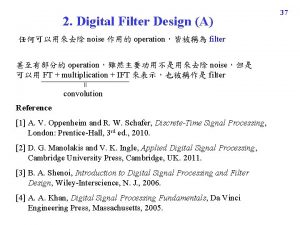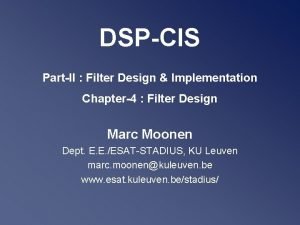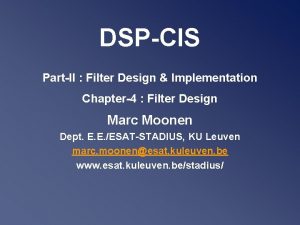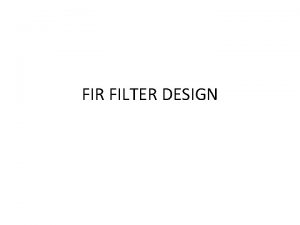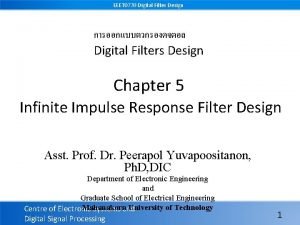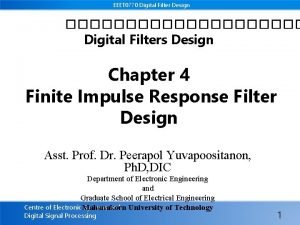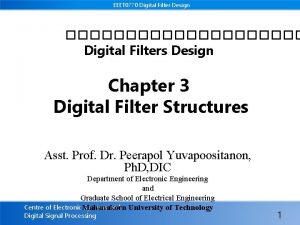Lect 5 A framework for digital filter design

















- Slides: 17

Lect 5 A framework for digital filter design

The framework provided to the designer valuable information from specifications to implementation. 5. 1 Structures for the Realization of Linear Time Invariant (LTI) System. Let us consider the first order system is given by

Introduction to digital filter A simplified block diagram of a real time digital filter with analogue input and output signals is shown in fig (5. 6).

As we have seen the main properties of the LTI system are the association and commutation as shown in fig (5. 2).

5. 2 Type of digital filter: FIR and IIR Digital filters are broadly divided into two classes: 1) Infinite impulse response (IIR) 2) Finite impulse response (FIR)

5. 3 Choosing between FIR and IIR The choice between FIR and IIR filters depends on the relative advantages of the two filters 1) FIR has linear phase response and this is important for data transition, biomedicine, digital audio and image processing. 2) FIR filters realized nonrecursively are always stable 3) FIR requires more coefficients for sharp cut off than IIR. 4) Analogue filters can be readily transformed into equivalent IIR digital filters meeting similar specifications.

5. 4 Filter design steps The design of a digital filter involves five steps: 1) Specification of the filter requirements. 2) Calculation of suitable filter coefficients. 3) Representation of the filter by suitable structure (realization). 4) Analysis of the effects of finite wordlength on filter performance. 5) Implementation of filter in software and/or hardware.

1) Specification of the filter requirements: The characteristics of digital filters are often specified in frequency domain. Fig (5. 8) shows frequency response for low pass filter. The following are the main parameters: -

2. Coefficient calculation The coefficient of the digital filters are h(k) for FIR, ������� for IIR. Calculations of IIR filter coefficients are based on the transformation of known analogue filter characteristics into equivalent digital filters. The two basic methods are used (1) The impulse invariant (2) The bilinear transformation

3. Representation of a filter by a suitable structure (Realization) Realization involves converting a given transfer function H(z) into a suitable filter structure. 1. For IIR filters, three structures are used: (a)Direct form (b) cascade form (c) parallel form



2. For FIR filter three structure are used: (1)Direct form (or transversal) (2) Frequency sampling (3)Fast convolution.


c. Fast convolution realization:

d. There are many other practical structures for digital filters

5. 5 Finite world length effects In actual implementation, represents the filter coefficients by limited number of bits, typically 8 to 16 bits, and the arithmetic operations indicated in the difference equation are performed using finite precision arithmetic.
 Var lect
Var lect Digital filter coefficients
Digital filter coefficients Digital filter design
Digital filter design Perbedaan rapid sand filter dan slow sand filter
Perbedaan rapid sand filter dan slow sand filter Blt method will convert analog filter to dt filter that has
Blt method will convert analog filter to dt filter that has Difference between rapid sand filter and slow sand filter
Difference between rapid sand filter and slow sand filter Offentlig förvaltning
Offentlig förvaltning Fungsi digital filter
Fungsi digital filter Noise
Noise Filter lpf hpf bpf brf
Filter lpf hpf bpf brf Digital filter
Digital filter Fir filter applications
Fir filter applications Image parameter method
Image parameter method The iir filter designing involves *
The iir filter designing involves * Ti webench filter designer
Ti webench filter designer Doc tf media
Doc tf media Bakki shower flow rate
Bakki shower flow rate Filterpro ti
Filterpro ti
